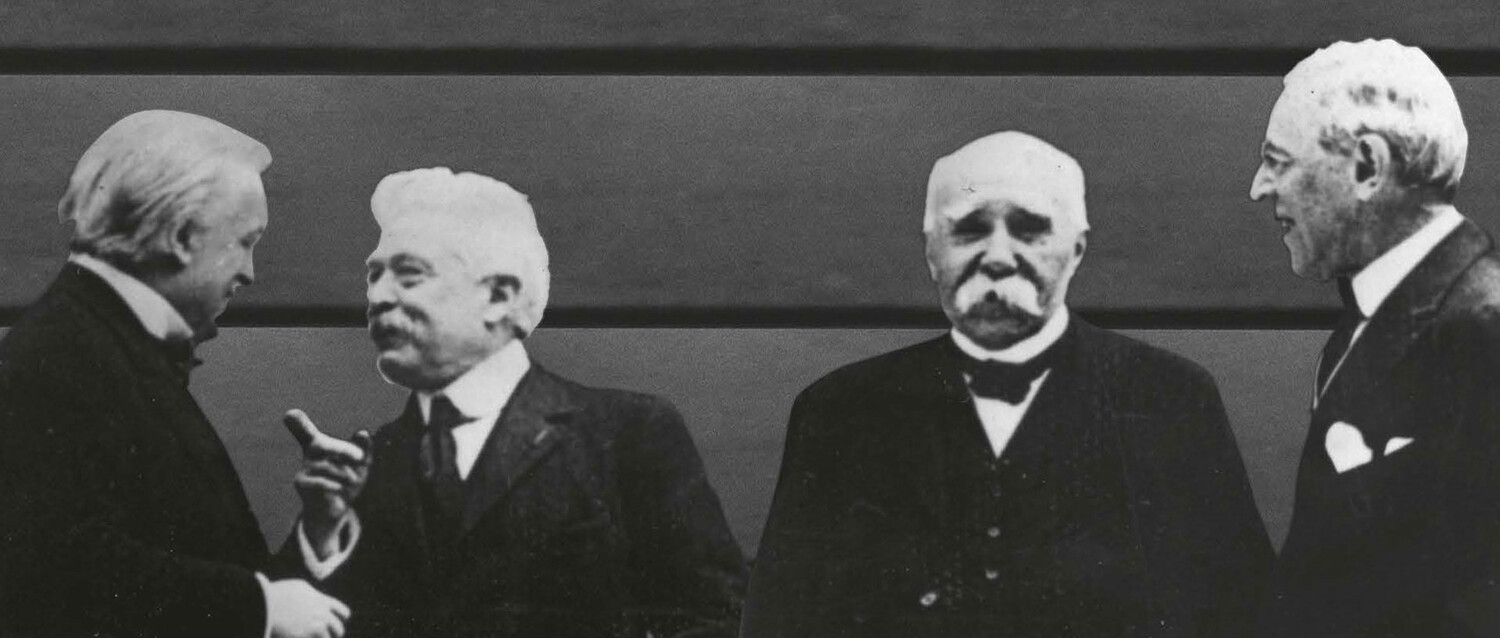
41. A forced diktat doesn’t solve an issue
Today, around 105 years back, the Treaty of Saint-Germain-en-Laye was signed in 1919 after the end of the World War I, between the Allies and the Republic of German-Austria. It was supposed to be a peace treaty that dissolved the Austro-Hungarian Empire.
The Treaty was seen as a harsh punishment for Austria, similar to other post-WWI treaties like the Treaty of Versailles.
The treaty redrew the geopolitical map of Central and Eastern Europe, creating several new nation-states - the new Austrian Republic, Czechoslovakia, Poland, and Yugoslavia. Thus, Austria had to give up large areas of land to these new countries and Italy and Poland. Besides, Austria was required to pay large reparations to the Allied Powers and it also forbade any future union between Austria and Germany. The treaty signing ceremony took place at the famous Chateau de saint-Germain-en-Laye.
Although Hitler was nowhere involved with the Treaty of Saint-Germain since he wasn’t in politics. However, one of the treaty's core stipulations, Article 88, which prohibited the Anschluss (union) between Austria and Germany without the consent of the League of Nations was the trigger point for the unrest in Germany which Adolf Hitler successfully took advantage of. Hitler later defied this provision by forcefully annexing Austria in the 1938 Anschluss, a direct violation of the treaty's intent.
On the other side, when Germany lost the World War I, its leaders signed the Treaty of Versailles on May 7, 1919. The victorious powers the United States, Great Britain, France, and other allied states imposed punitive territorial, military, and economic provisions on defeated Germany.
Even Germany was asked to return Alsace-Lorraine to France which it had seized more than 40 years earlier. The Treaty forced Germany to concede territories to Belgium, Czechoslovakia, and Poland and all German overseas colonies became League of Nation Mandates.
German city of Danzig became a free city under the protection of the League of Nations. Germany forfeited 13 percent of its European territory and one-tenth of its population, around 7 million people.
The two major points were - Austria’s unification with Germany was a goal long desired by Pan-Germanists and an active aim of the Nazi Party; and second, the most humiliating portion of the treaty ‘Article 231’, commonly known as the War Guilt Clause, which forced Germany to accept complete responsibility for initiating World War I.
This Clause allowed the German army to limit to 100,000 men, restricted the Navy to vessels under 10,000 tons, and forbidden to maintain an air force. Germany was also required to conduct war crimes proceedings against its prominent leaders for waging aggressive war.
There were some other treaties also but final outcome of the treaties was nowhere very beneficial in enforcing peace in the region.
Further history reveals that the peace treaty did not ultimately help to settle the international disputes which had initiated World War I. On the contrary, it tended to obstruct inter-European cooperation.
For the populations of the defeated powers, Germany, Austria, Hungary, and Bulgaria, their respective peace treaties appeared an unfair punishment. For example, the war guilt clause, its reparation payments, and the limitations on the German military were particularly onerous in the minds of most Germans.
Versailles Treaty represented one of the platforms that gave radical right-wing parties like Hitler's Nazi Party in Germany to flourish in the early 1920s and early 1930s.
Later, the newly formed German democratic government saw the Versailles Treaty as a dictated peace. It was the worst kind of humiliation which helped average voters to often overlook the more radical tenets of Nazi ideology.
The Germans just rallied behind Hitler.
Historic views on the great peace treaties have changed.
The historian Arnold Suppan has addressed this question in his book Imperialist Peace Order – Saint-Germain and Trianon, 1919-20, in much detail.
He says that borders, after the war, were drawn primarily according to strategic foreign policy, but did not take the ethnic context into account.
As a result, conflicts were inevitable because predominantly Hungarian or Austrian regions fell to other states and suddenly, millions of minorities felt uncomfortable.
The lesson from the history – a nation or even a combined force of nations cannot stop the defeated nation to reclaim its lost glory, rather it only speeds up the process.
A case in point may be the Palestinians and even Ukrainians.
A forced diktat will only make the future history of the world more bloodied.
(Top Photo: The main representatives of the Allied Powers. From left: Prime ministers David Lloyd George, UK, Vittorio Emanuele Orlando, Italy, Georges Clemenceau, France and US-President Woodrow Wilson. Photo Courtesy: Austrian Academy of Sciences Press)